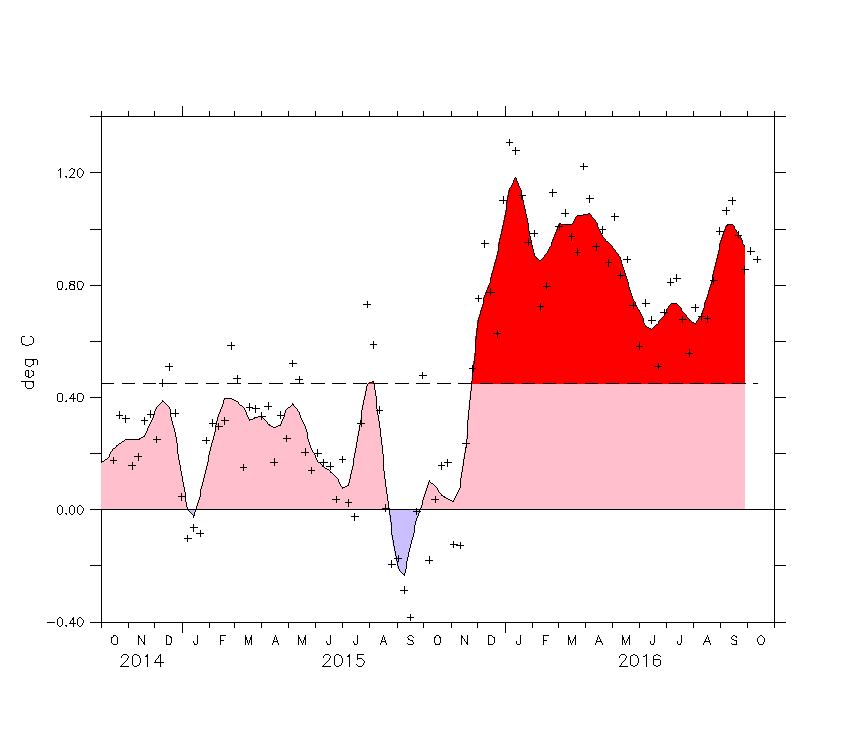I am looking for an explanation for this warm pool of water in the North and North East Bay of Bengal - North Bay Warm Water Anomaly. Currently the path of the sun is towards the southern hemisphere and we are in the fourth week of October. In contrast there are no warm SSTs along the North Arabian Sea.
Is it possible that warm water from the equator has moved up North along the eastern wall of the Bay of Bengal ? Is that indicated by the gyres on display on the Earth Null site ? I observe that there is a warm pool along the eastern seaboard near the equator(negative Indian Ocean Dipole) - IOD Index. Is it possible to show (if my guess is correct) that there is a south to north pressure gradient that is moving warm water north(ageostrophic circulation) ?
As you can see the weekly SST global anomaly as well shows a warm pool anomaly in the North Bay of Bengal.

